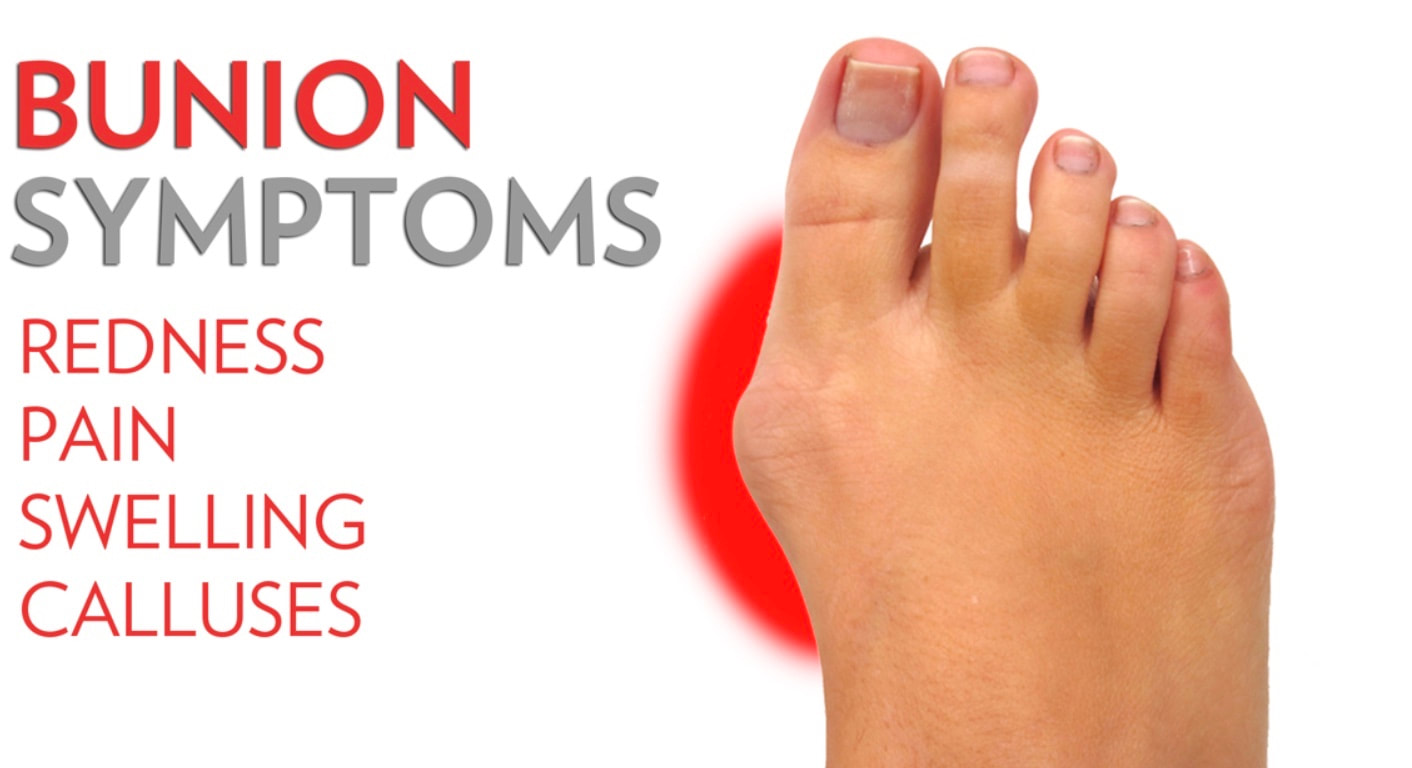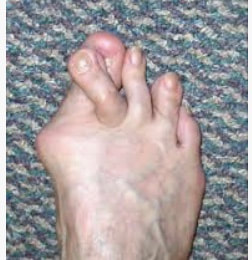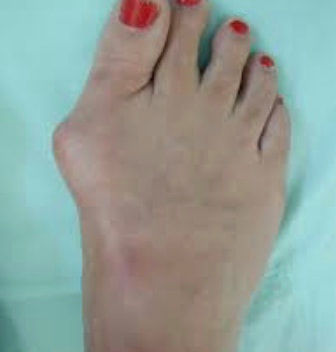BUNION PAIN
A bunion (from the Greek word meaning "turnip" ) is a bony deformity which is located at the base of the big toe. It presents as a bump on the inside of the foot. The big toe deviates toward the lesser toes, and may eventually abut, over-ride or under-ride the second toe, and in extreme cases, also the third toe. As a result of the deviation, the joint at the base of the big toe experiences abnormal forces which can result in dislocation or arthritis in that joint.
Bunions have a number of causes. Misshapen or malpositioned bones in the foot or leg are frequent causes. Diabetes, trauma, or inflammatory processes such as rheumatoid arthritis can result in the formation of bunion. People with genetic errors, such as Marfan's Syndrome, can have weak connective tissues, which results in many problems, bunions among them.
Abnormal foot biomechanics, such as flat-footedness, is a frequent, final common pathway for many of the causes of bunions.
As a bunion deformity progresses from mild to moderate, to severe, there are multiple factors which can cause pain. Fitting into regular shoes can become difficult or impossible. Even when a person can get a shoe over the deformity, shoe pressure can result in pain at the bunion bump, in the joint at the base of the big toe, or secondarily at the displaced, lesser toes. Arthritis developing within the joint at the base of the big toe can lead to sharp or achy pain deep within the joint, and the amount of motion available at that joint can diminish. With time, the pain tends to increase in severity, frequency and duration. Initially, the pain may be present only after extended time spent on your feet. Eventually, the pain can become present when you are off your feet, even awaking you at night. It may become necessary to limit normal daily activities due to the pain.
DIAGNOSIS
The presence of a bunion deformity is often evident to the untrained eye. Evaluation of bunions is performed with a clinical examination of how bones and joints are moving within your foot. Muscle testing is done in assessing for possible contribution by weak muscles. Analysis of your gain provides additional information. X-rays allow your doctor to evaluate the condition, structure and position of the bones and joints with your foot.
TREATMENT
Treatment of bunions varies according to the age and general health of the person, the amount of pain and restriction of activities endured by the person, and the degree of deformity present.
Non-surgical treatment can employ changes in shoe wear. Oral anti-inflammatory analgesic medications can diminish the pain, especially in milder cases. Prescription shoe inserts (orthoses) will reduce much of the abnormal forces which caused the deformity initially, and the pain thereafter. Injections into the joint are sometimes used to provide relief for a limited time. Changes in the type or extent of athletic activities can provide substantial reduction in bunion pain. Physical therapy can increase motion in the joint and reduce the pain.
Surgical treatment of bunions is generally reserved for those cases where the deformity is so severe that the fitting of shoes is difficult, or the pain proves unresponsive to non-surgical treatments. Multiple measurements are made for the x-rays in order to determine which surgical procedure is most appropriate in a give case. Regardless of the procedure chosen, the goal of bunion surgeries is to remove the bony prominence at the inside of the foot, to straighten the big toe, to eliminate pain and to restore function.



